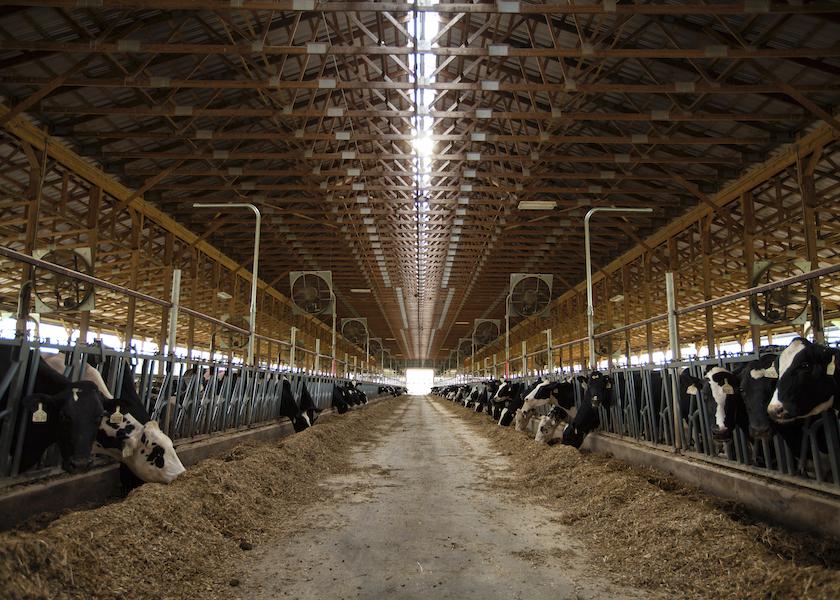Ration Alternatives to Balance Against Forage Shortages

Crafting effective lactating rations when the “ideal” ingredients are in short supply is challenging, but possible.
After a summer of drought in parts of the Central Plains and Upper Midwest, some dairies are facing forage shortages and looking for ways to stretch their rations without affecting milk production or cow health.
J.W. Schroeder, Extension Dairy Specialist Emeritus in currently drought-stricken North Dakota, advised that, in the absence of adequate forage stores, dairy and beef producers may need to temporarily accept lower production.
“As feed supplies dwindle, producers of all ruminant species will be forced to abandon the ideals of production efficiency and move into survival mode,” he stated.
Schroeder advised feeding more grain can raise dietary net energy for lactation, but will not match the performance achieved by feeding high-quality alfalfa with low to moderate grain levels. He cited a study in which cows fed a diet containing high-quality alfalfa with 40% neutral detergent fiber (NDF) and 20% grain outperformed cows fed a ration of with low-quality alfalfa (60% NDF) and 70% grain.
There are several avenues to attempt to navigate poor-quality forages or diminished forage supplies, though not all will preserve milk and/or component production at desired levels. They include:
Feeding more grain – Avoiding acidosis is the key to safe grain feeding, which requires commensurate fiber feeding. Schroeder advised keeping dietary NDF at or above 25% of ration dry matter and avoiding finely chopped forages. He also suggested limiting grain intake to 7-8 pounds per feeding, or 50-60% of ration dry matter. The Penn State University Dairy Team ranks the rate of digestion for grains, from slowest to fastest, as: milo, corn, barley, wheat, and oats.
Using high-fiber by-products as starch replacements or forage extenders – Ear corn, corn gluten, hominy, beet pulp, wheat bran, cottonseed hulls, oat mill by-products; and soy hulls all can add fiber and sometimes energy to the diet while buffering the acidic effects of grain concentrates. Schroeder advised maintaining minimum effective fiber levels at 19-21 acid detergent fiber (ADF); 26-27 NDF; 75% of NDF from coarse roughage; 40-50% forage in total ration dry matter.
Feeding supplemental fat – Adding fat can boost the ration’s energy content and prevent acidosis by discouraging cows from overfeeding on grain. Schroeder said a good rule of thumb is that pounds of fat in the ration should approximately equal pounds of butterfat per hundredweight of milk in the herd. The Penn State team advised watching fatty acid profiles of ingredients carefully, as unsaturated fat can reduce fiber digestibility in the rumen. They suggested considering protected fat sources, which bypass the rumen and thus do not impact rumen function.
Feeding more corn silage – If corn silage is available, it can be fed at 60-75% of total forage in the ration. Schroeder said more protein supplementation will be needed, and using high-fiber, low-starch by-products will help stimulate rumination and reduce the potential for acidosis. Adding a buffer and increasing feeding frequency also can help promote better cow performance when feeding high-corn-silage diets.
The Penn State team provides an extensive list of concentrates commonly used in dairy rations; the beneficial contributions they make to the ration; and suggested maximum intakes for each ingredient, in this publication.







